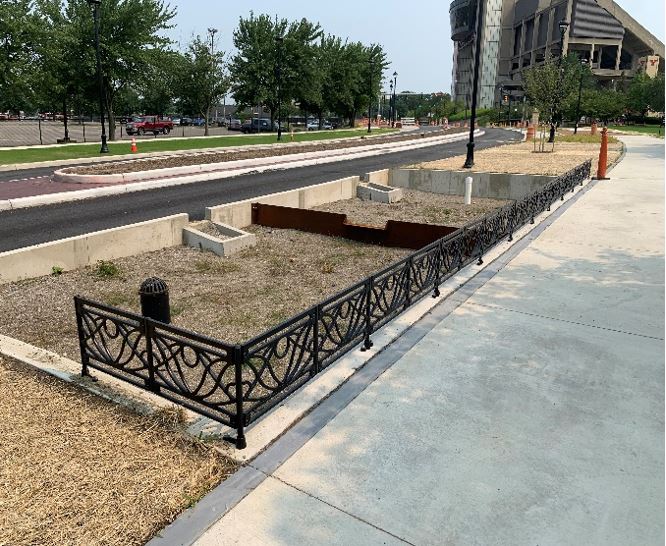State Infrastructure Banks (SIBs) are revolving surface transportation loan funds established and administered by States. Much like a private bank, a SIB can offer a range of credit assistance to public and private sponsors. The Ohio SIB Program provides direct loan and bond financing to eligible borrowers for capital projects to improve highway, transit, rail, and intermodal facilities. In addition, Ohio’s SIB program lends directly to Ohio Metropolitan Planning Organizations (MPOs) for use in programming of projects in their Transportation Improvement Programs (TIP).
Managed by the Ohio Department of Transportation (ODOT), the Ohio SIB offers loans, loan guarantees, letters of credit, leases, interest rate subsidies, debt service, cash reserves, and other economic assistance to eligible borrowers. The Ohio SIB has one of the highest number of loans committed of any SIB, in part due to the support and flexibility it provides to its eligible borrowers1. This success stems in part from the work of a SIB Coordinator who, in partnership with the ODOT Division of Finance, employs a marketing campaign to advertise the accessibility and capabilities of SIBs to potential partners; one aspect of this campaign was a “roadshow” wherein the ODOT SIB team held presentations and trainings for potential SIB borrowers. The ODOT SIB Coordinator also provides extensive guidance to borrowers, especially nontraditional borrowers like MPOs, to secure loans using flexible and innovative financing methods such as future Federal funding allocation.

Figure 1: Rendering of SMART2 Network project Phase II work on the intersection of Federal and Phelps Streets in the Youngstown Central Business District. Image courtesy of Eastgate COG.
ODOT, through its SIB program, works directly with MPOs to use their future Federal funding allocation to finance right-of-way, reconstruction, and safety improvement projects. ODOT allows MPOs to pledge their future Federal funding allocation to their municipal partner’s SIB loan application. The ODOT Finance team works closely with borrowers on MPO-backed SIB projects to maintain project accounting. This is especially important for Federal reporting: in its TIP, the MPO uses a coding structure supplied by ODOT to acknowledge that the SIB loan will be part of the Federal funding package.
While the foundation for this type of SIB financial assistance is significant, the partnership between a SIB borrower, like an MPO, and the SIB administrator, often a State DOT, enables project funding that may not otherwise be possible. The flexibility that ODOT affords to MPOs to pledge future Federal funding helps these agencies make strategic financial planning decisions.

Figure 2: Mid-construction of street improvements in Youngstown, Ohio. Image courtesy of Eastgate COG.
The SMART2 Network Project in Youngstown, Ohio is an example of how the flexibility of a SIB to lend to local agencies empowers them to plan and finance projects. For the City of Youngstown, this flexibility enabled the MPO to pledge future Federal funds to repay its SIB loan, increasing the MPO’s ability to secure overall project funding.
The Youngstown SMART2 Network Project encompasses a range of activities, from infrastructure installation and improvements to automated shuttle pilots. The Eastgate Regional Council of Governments (COG), the MPO for the Youngstown Metropolitan Area, sought a SIB loan for the second phase of the project, which included resurfacing of all roadways within project limits; bicycle facilities; reconstruction and reconfiguration of streets to improve road alignment and to incorporate streetscaping; pedestrian lighting; and improved pedestrian crossings consisting of decorative crosswalks, curb bump outs, and curb ramps throughout the project.
Eastgate COG began this project in 2018 with support of a $10.85 million US Department of Transportation grant from the Better Utilizing Investments to Leverage Development (BUILD) program. This grant, plus a more than ten-year history of planning and coalition building with project partners, provided the foundation the COG needed to pursue innovative funding sources to continue and expand the SMART2 project. Together with the City of Youngstown, Eastgate COG developed a $5 million SIB loan proposal, which pledged future STBG Program funds to repay the loan over an eight-year period. This loan represented the final funds needed to achieve Eastgate COG’s SMART2 vision; without it, some aspects of the project may have been delayed or omitted. The $5 million SIB loan helped Eastgate COG secure the full $32 million budget to finance the entire project.
The City of Youngstown applied for the SIB loan as co-signers and partners on the SMART2 project. While the repayment of the loan principal would come from Eastgate COG, the City submitted the application and would be responsible for repayment of the loan interest. Eastgate COG repays the principal of the loan biannually directly from their funding balance. Eastgate COG’s reputation as a secure public sponsor gave partners at ODOT the confidence to support Eastgate COG’s pledge of future funds.
Funding Source |
Amount |
|---|---|
Eastgate COG STBG Program |
$4.8 |
Ohio SIB Loan |
5.0 |
U.S. DOT BUILD Grant |
10.8 |
Appalachian Regional Commission (ARC) Partnerships for Opportunity and Workforce and Economic Revitalization (POWER) Grant |
1.4 |
Local Investment |
2.9 |
Private Investment |
4.1 |
State Funding |
3.6 |
Table 1: Table displaying the funding used in the SMART2 Network project. Created by U.S. DOT. |
Total: $32.6 |
Eastgate COG took the lead in bringing together project partners, financiers, and the public to ensure both financial and policy support for all aspects of SMART2. They received support from the City of Youngstown legal team to ensure the project met all guidelines for its various funding aspects, including the SIB loan. When a local entity uses Federal funds to repay a SIB loan, the project to be financed must meet all Federal eligibility and administrative requirements. The SIB loan follows the same eligibility requirements of STBG funds. More information on STBG, and therefore SIB, eligibility can be found on FHWA’s website.
Eastgate COG also led project partners in aligning planning efforts for SMART2 to develop a cohesive portfolio with the necessary financial support. This creative use of Federal dollars, enabled by its dependable financial history and leadership with project partners, allowed the COG to secure the funding for its ambitious vision.
For a complete profile on the Ohio SIB, please visit the FHWA Center for Innovative Finance Support website.
1 As of September 2020, the Ohio SIB has issued 252 loans and twelve bonds totaling $768.7 million. Source: Ohio SIB Annual Financial Report, September 2020.